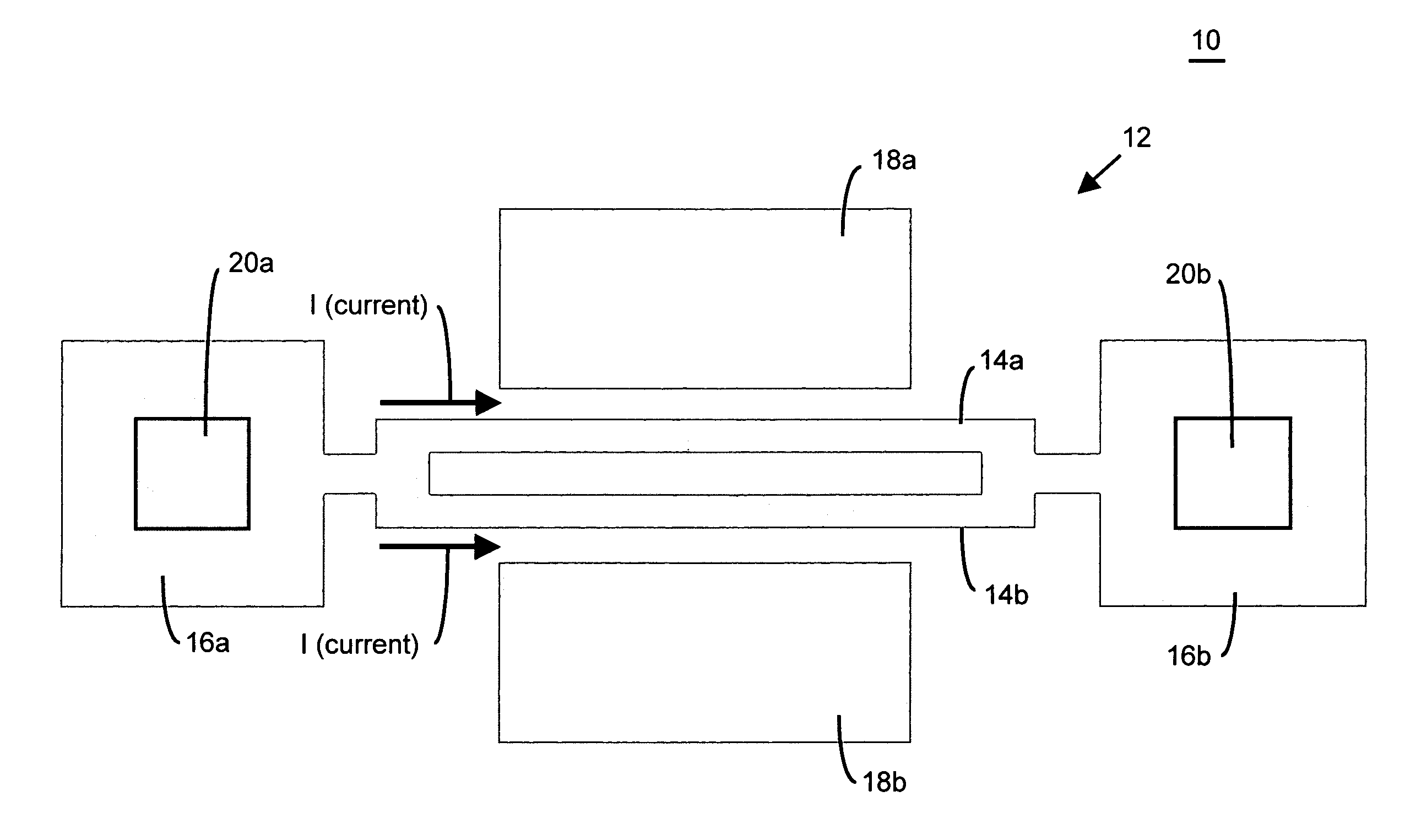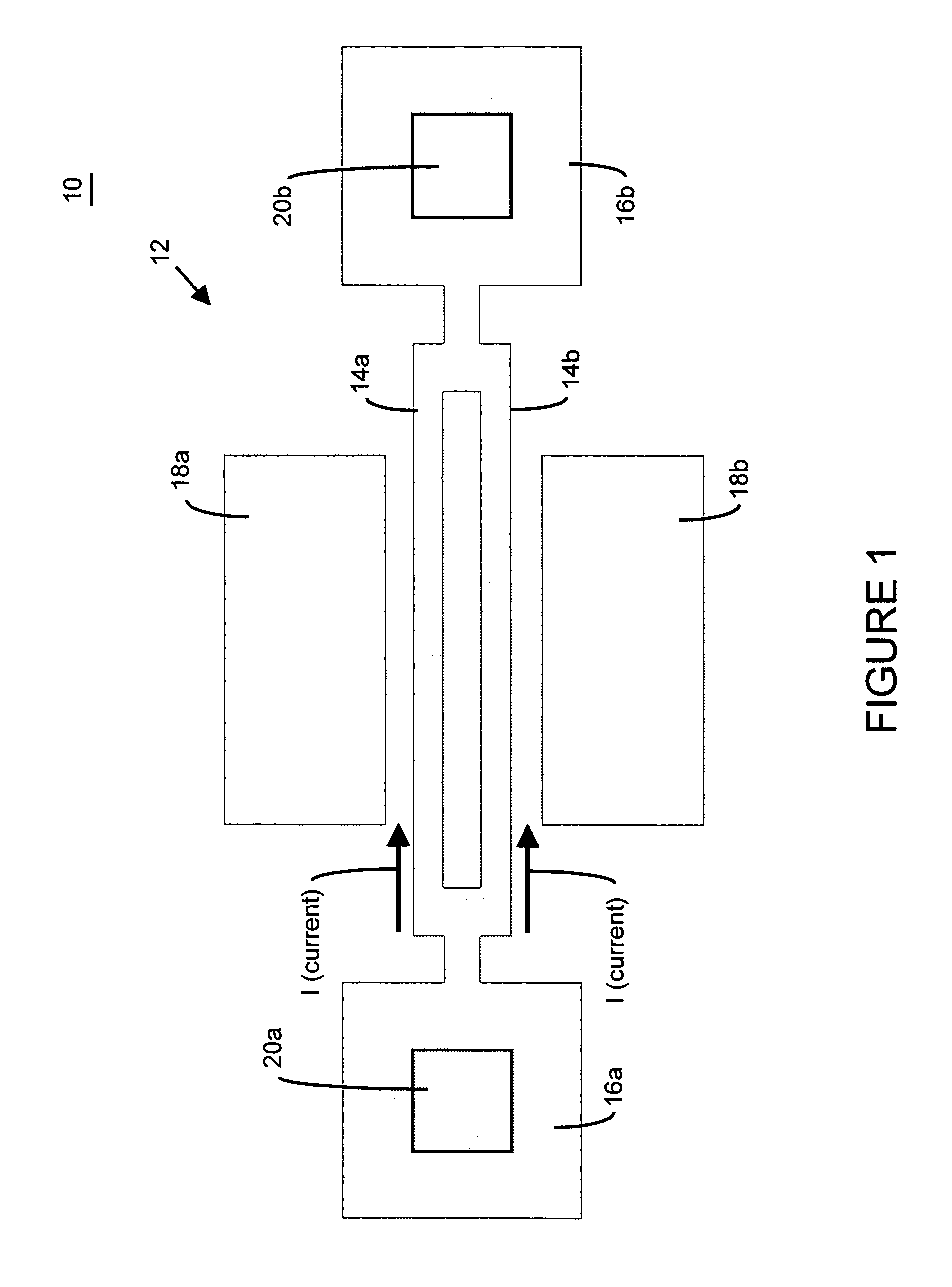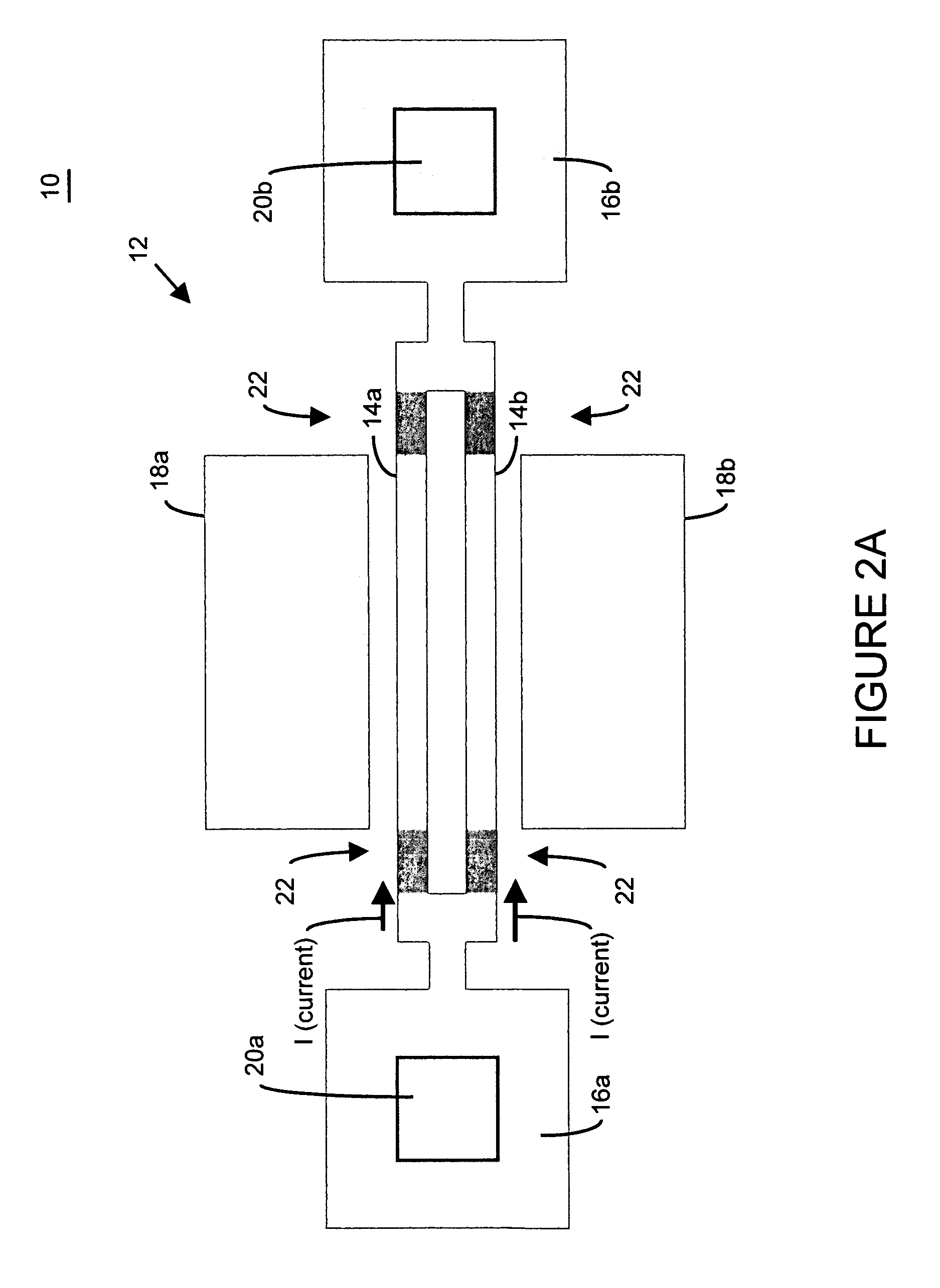Method for adjusting the frequency of a MEMS resonator
a technology of mems resonators and frequency adjustment, which is applied in the direction of resistance/reactance/impedence, instruments, measurement devices, etc., can solve the problems of large variations of the resonance frequency of such resonators, significant impact on the operation and/or function of the structure, and difficult to precisely predict, compensate, address and/or predetermine before fabrication
- Summary
- Abstract
- Description
- Claims
- Application Information
AI Technical Summary
Problems solved by technology
Method used
Image
Examples
Embodiment Construction
[0039]There are many inventions described and illustrated herein. These inventions are directed to a method of fabricating a microelectromechanical resonator having an output frequency that may be adjusted, tuned, set, defined and / or selected whether before and / or after final packaging. In a first aspect, the method of the present invention adjusts, tunes, sets, defines and / or selects the frequency of the microelectromechanical resonator by changing and / or removing material from the mechanical structure of the resonator by resistively heating one or more elements and / or beams of the mechanical structure (for example, the moveable or expandable electrodes).
[0040]In this aspect of the present invention, an electrical current is applied to the moveable electrodes to resistively heat the electrode to a sufficient temperature so as to change and / or remove material from one or more moveable electrodes of the mechanical structure. In one embodiment, the material may be changed and / or remov...
PUM
 Login to View More
Login to View More Abstract
Description
Claims
Application Information
 Login to View More
Login to View More - R&D
- Intellectual Property
- Life Sciences
- Materials
- Tech Scout
- Unparalleled Data Quality
- Higher Quality Content
- 60% Fewer Hallucinations
Browse by: Latest US Patents, China's latest patents, Technical Efficacy Thesaurus, Application Domain, Technology Topic, Popular Technical Reports.
© 2025 PatSnap. All rights reserved.Legal|Privacy policy|Modern Slavery Act Transparency Statement|Sitemap|About US| Contact US: help@patsnap.com



